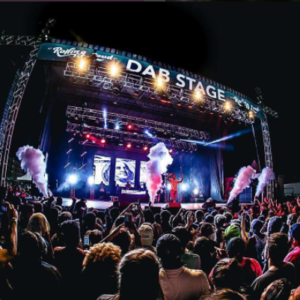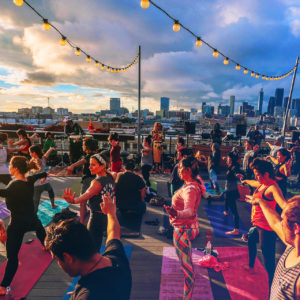 View Winners →
View Winners → 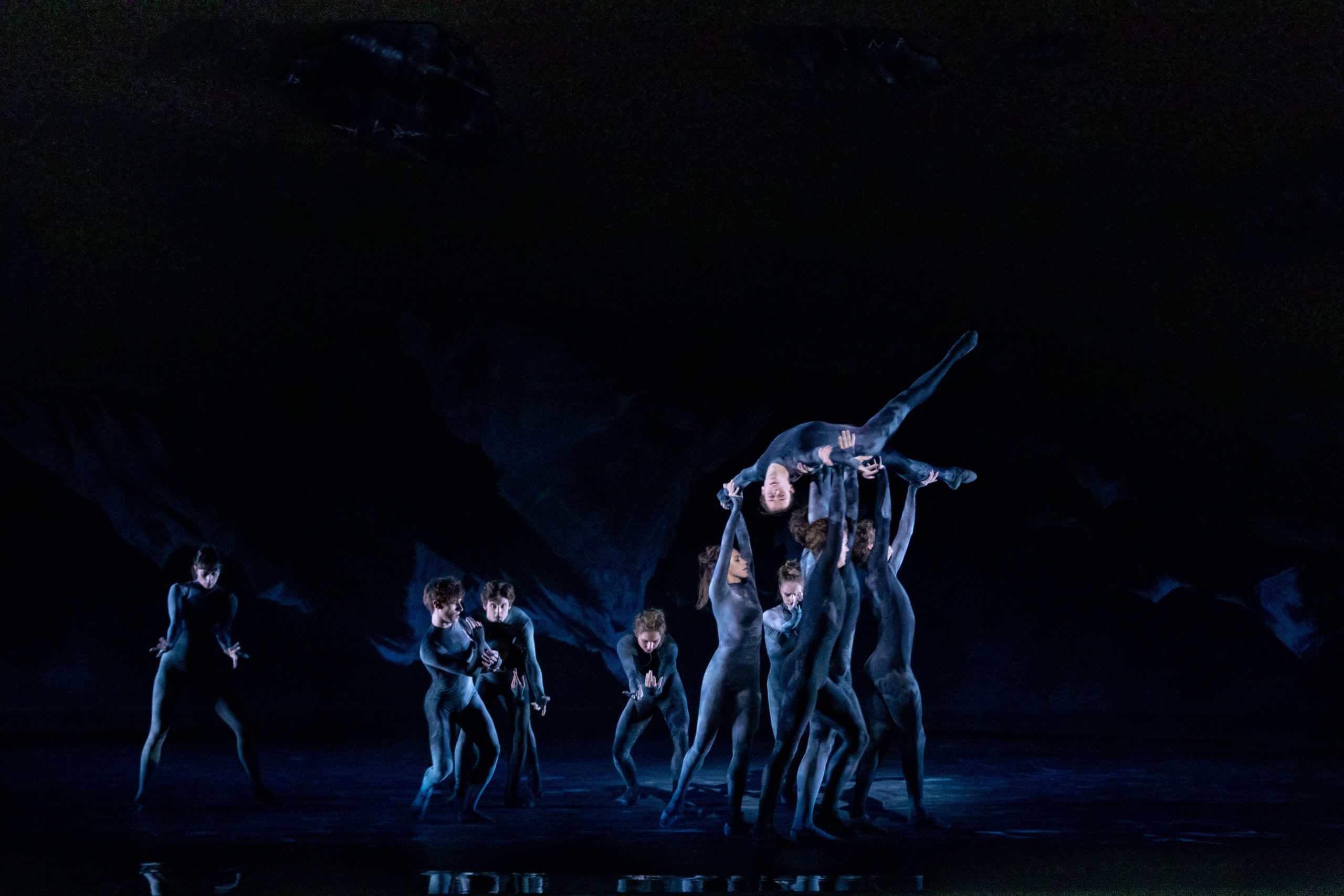

Photography by Cheryl Mann.
Closing out the 2018/2019 season for the Glorya Kaufman Presents Dance at The Music Center, the LA Phil has returned to the Dorothy Chandler Pavilion after moving their residency to The Music Center’s Walt Disney Concert Hall over fifteen years ago. Joining them is a disarray of multi-disciplinary British visionaries in the art world. Wayne McGregor choreographs numerous compositions from Thomas Adès, with the mesmerizing designs by artist Tacita Dean as foregrounding backdrop for the night’s world premieres in music and dance.
The two-night historical event began with the west coast premiere of Outlier, McGregor’s choreographed interpretation of Adès’ violin concerto Concentric Paths, helmed by violinist Leila Josefowicz. McGregor’s ekphrastic inspirations call abstract and minimalist art to command the presentation, creating more of a conversation with the dancers and set, further dictating the mood that pours out from the LA Phil in the pit below.
Amplifying the affair, Ben Cullen Williams masters the video installations critical to the execution of the evening’s showings. In Outlier, he utilizes minimal elements, incorporating shapes such as circles to form depths of rings, and later softened shades projected with a neutral color palette, implemented on the dancers from costume designer Moritz Junge. Lines and forms cleanly intersplice on stage, arms pointed straight, bodies stand pencil-like. It’s no surprise that the three movements are titled, “Rings,” “Paths,” and “Rounds,” respectively.
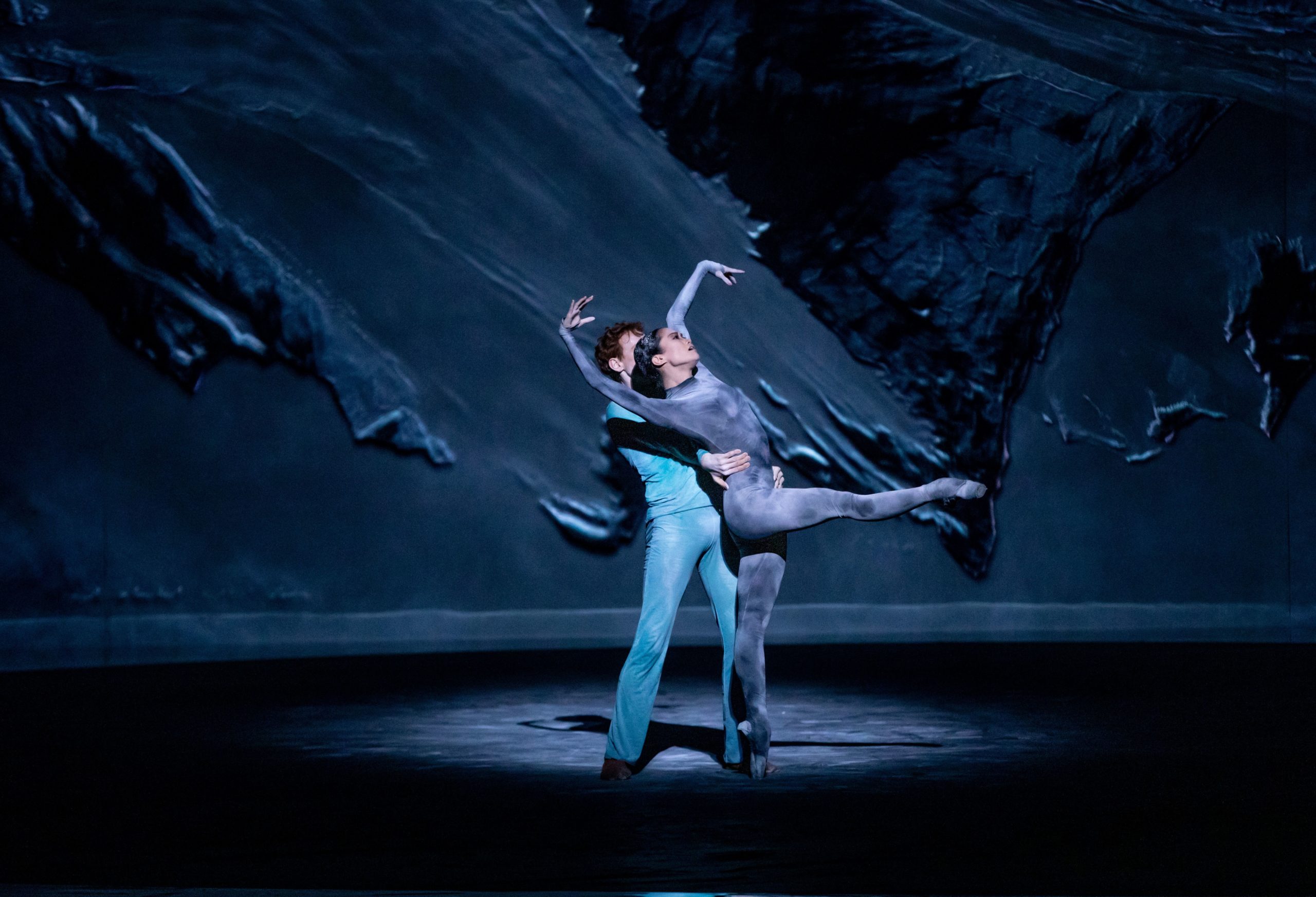
Photography by Cheryl Mann.
Living Archive: An AI Performance Experiment, a dizzying undertaking by McGregor, utilizes technology through his partnership with Paris’ Google Arts & Culture Lab. A choreographic tool that studies countless footage of McGregor’s dance archive, the machine produces entirely new choreography with the stamp of McGregor’s inflection synonymous with his career. Set to Adès piano concerto In Seven Days with Kirill Gerstein commanding on the piano, Living Archive matches components of uneasy wavering with climactic, unsettling synchronicity from the piano and percussion.
The dancers with Company Wayne McGregor seem equally eager in translating this synthetic foray from the mind of McGregor. Dancers Joshua Barwick, Jordan James Bridge, and Rebecca Bassett-Graham are exemplary in the distinction of power that is evoked in the performance’s interplay. The movements at times are erratic, yet flowy. As the music expels form but plays with traditional elements, so too the dancers mimic the style. Hands form into blades, then fists, in response to the darkness transpiring with sudden gasps of resolution.
At times their limbs dazzle, other times bewilder as if weapons, sharp, cold. The movements appear involuntary, but remain consistently aware of the struggle of lightness and weight, flirtation and depth, classical iterations with contemporary punctuations. The hands flutter, sporadically weightless, then drop as the legs take over, in motion and muted pattering of pedal tones. The intent appears chaotic, but is decorated with dancers almost as bystanders, with an unwavering stance observing the main action in the forefront. McGregor’s pride was evident, as he threw his dancers forward for further bows at the close of their performance.
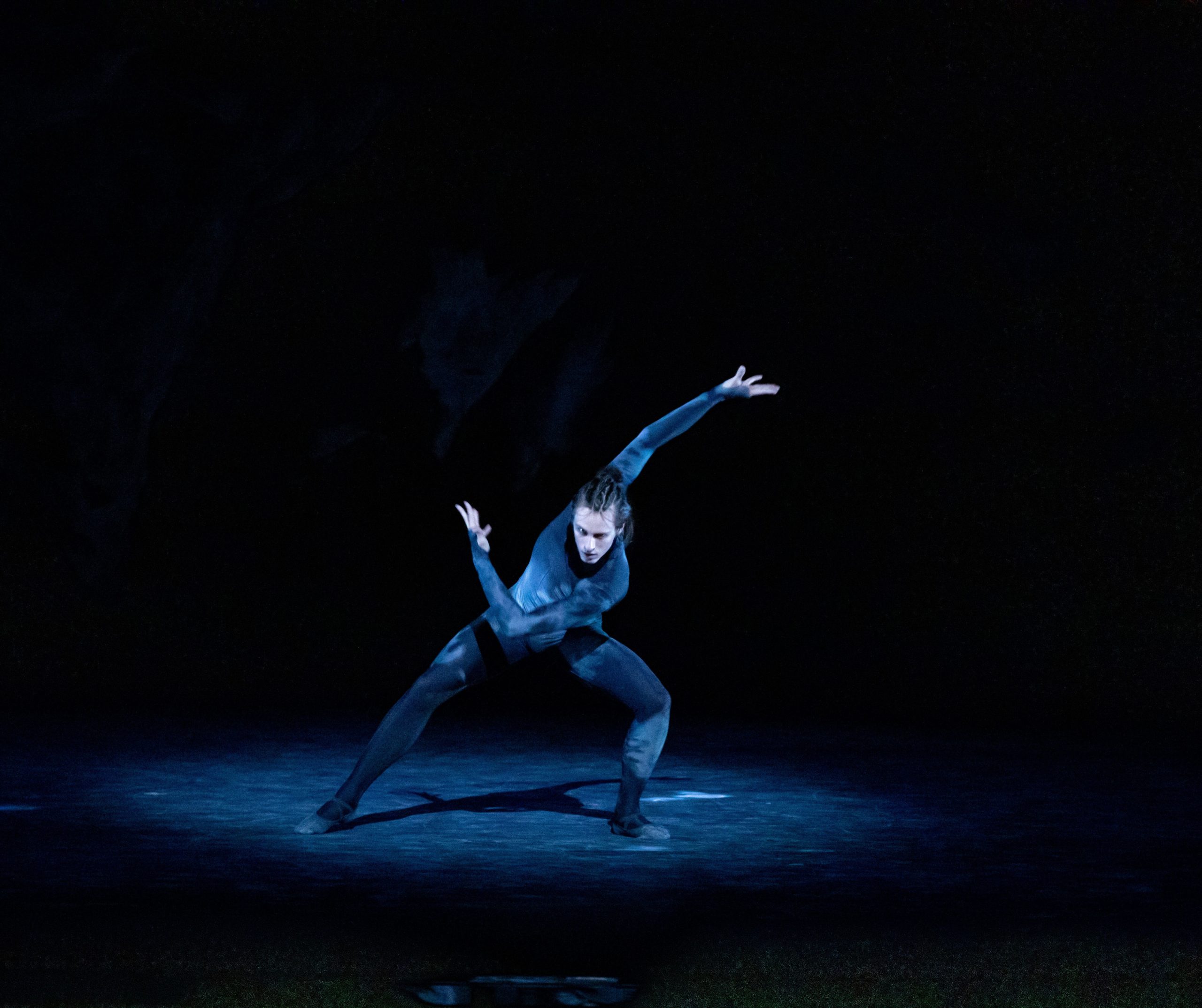
Photography by Cheryl Mann.
Adès additionally premiered his newest composition The Dante Project Part I [Inferno], commissioned as part of the collaboration between The Music Center, The Royal Ballet, and the LA Phi. An astounding vision to see the creator of his works so fluently translate his audial vision to the LA Phil, from there to the performances on stage, and from there to the audience. Inferno is just the start, with the complete performance of all three acts to come in London at The Royal Opera House in May 2020.
Adès and McGregor’s translation of Dante’s Divine Comedy finds a new setting, with Tacita Dean’s transforming black costumes like blackboard erasers, slowly filling with white in varying areas of the body depending on where the dancers fall on the stage. Their ominous formations mix with the delicacy of the harps and strings, a playful yet sinful diaspora to the mountainous backdrop drawn by Tacita Dean. They crawl, dispersing, rove in pirouettes and collapse. The music rises and falls, calls and responds. All as Edward Watson and Gary Avis look on in their portrayals as Dante and Virgil.
A stand out of the night was Calvin Richardson, whose controlled, energetic movements had the audience wide-eyed though his interjection brief. Equally as expounding was Beatriz Stiz-Brunell, whose serpent-like affectations create an impression alluring and flirtatious and yet horrifying. A microcosm of emotion and movement emblematic of the choreography throughout Inferno.
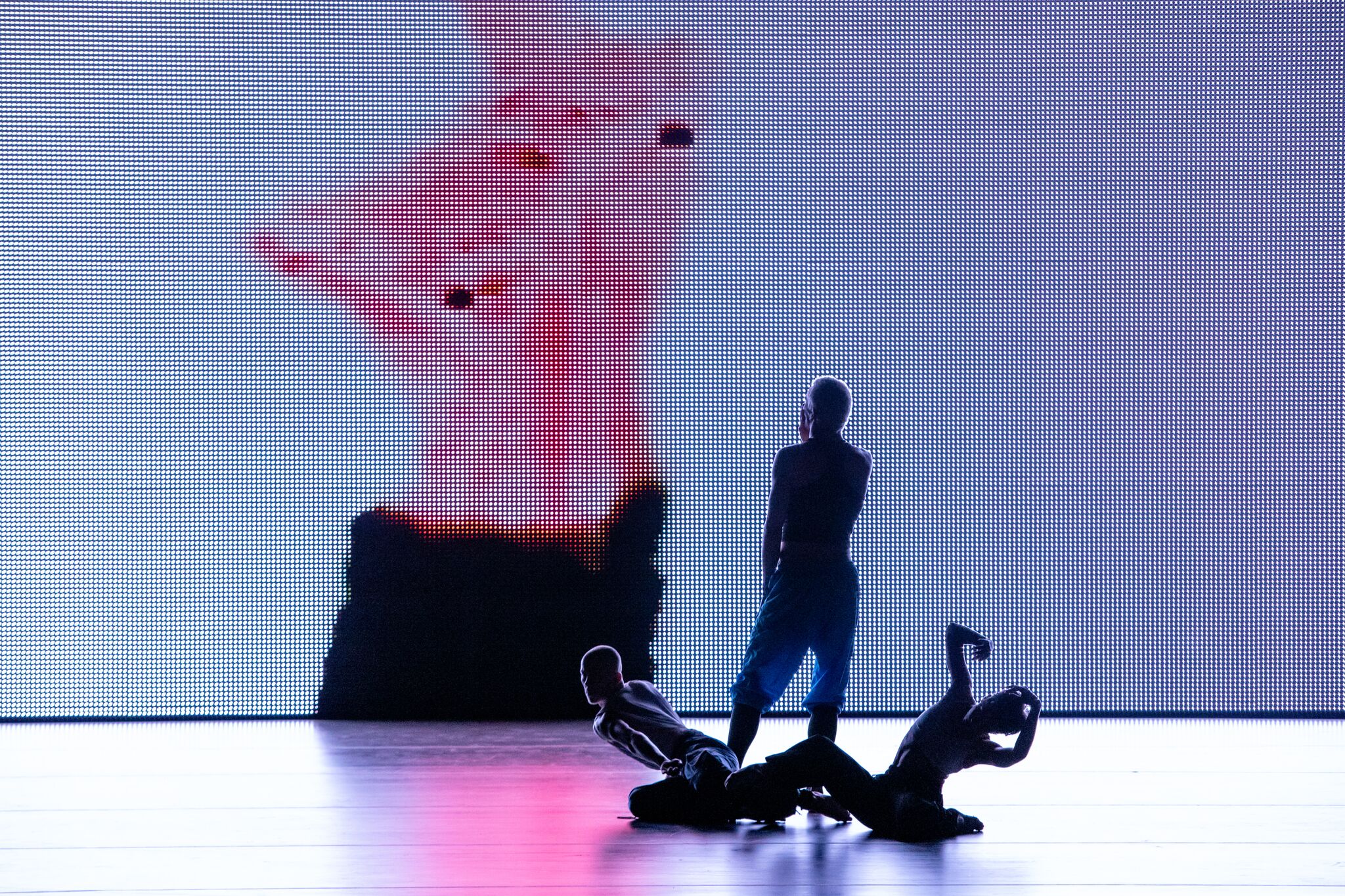
Photography by Cheryl Mann.
At the close of the night, the entire audience stood in animated awe, the Royal Ballet dancers gleaming in their varied chalked pattering on stage. McGregor and Adès together beamed at their respective triumphs, with everyone else in collaboration featured as well.
Tonight is the second and last night of Ades & McGregor: A Dance Collaboration.








































































































